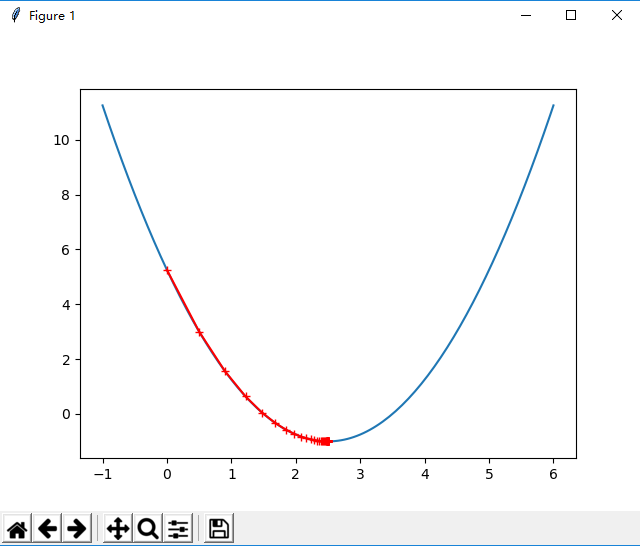python实现简单的梯度下降法
代码如下:
# 梯度下降法模拟 import numpy as np import matplotlib.pyplot as plt plot_x = np.linspace(-1,6,141) # 计算损失函数对应的导数,即对y=(x-2.5)**2-1求导 def dJ(theda): return 2*(theda-2.5) # 计算theda对应的损失函数值 def J(theda): try: return (theda-2.5)**2-1 except: return float('inf') # 梯度下降法开始 theda_history = [] # 用来记录梯度下降的过程 theda = 0.0 # 以0作为开始点 eta = 0.1 # 设置学习率 # epsilon = 1e-8 由于导数可能达不到0, # 所以设置epsilon,表示损失函数值每次减小不足1e-8就认为已经达到最小值了 # n_itera 用来限制迭代的次数,默认为10000次 # 梯度下降函数 def gradient_descent(initial_theda,eta,n_itera=1e4,epsilon=1e-8): theda = initial_theda theda_history.append(initial_theda) i_itera = 0 while i_itera<n_itera: gradient = dJ(theda) last_theda = theda theda = theda - eta * gradient theda_history.append(theda) if(abs(J(theda)-J(last_theda))<epsilon): break i_itera += 1 def plot_theda_history(): plt.plot(plot_x,J(plot_x)) plt.plot(np.array(theda_history),J(np.array(theda_history)),color='r',marker='+') plt.show() gradient_descent(theda,eta) plot_theda_history()
效果图:


